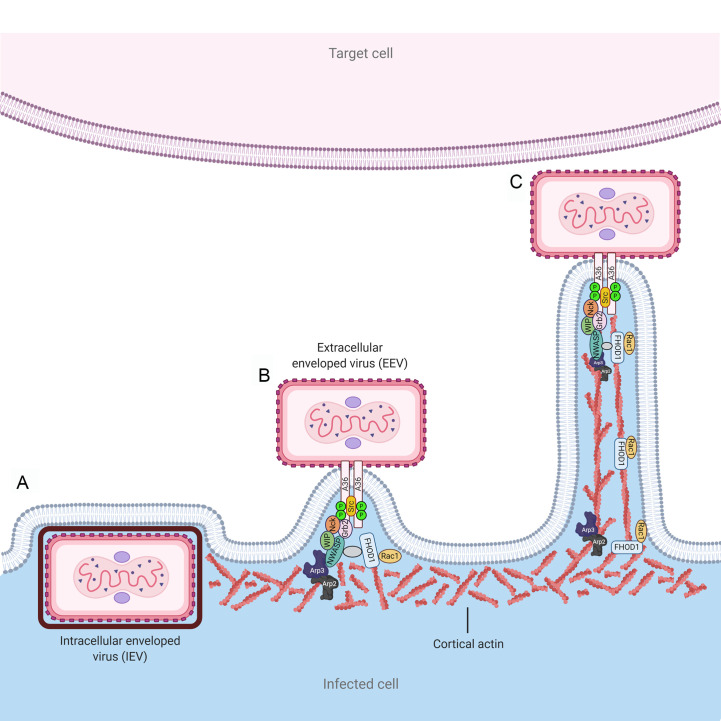Fig. 1.
Formation of actin tails. Vaccinia virus (VACV) can spread from cell-to-cell through different mechanisms. In VACV infected cells, intracellular enveloped particles are transported to budding sites, where the outer viral membrane fuses with the plasma membrane (A). Extracellular enveloped viral particles remain attached to the plasma membrane and several cellular factors are recruited to the site through a cascade of events initiated by phosphorylation of the A36R protein cytosolic tail (B). Polymerization of F-actin underneath the plasma membrane occurs through activation of the cellular pathways N-WASP/Arp2/3 and FHOD1/Rac1, leading to elongation of actin tails (C). Viral particles can thus reach adjacent cells for rapid direct cell-to-cell spread.

